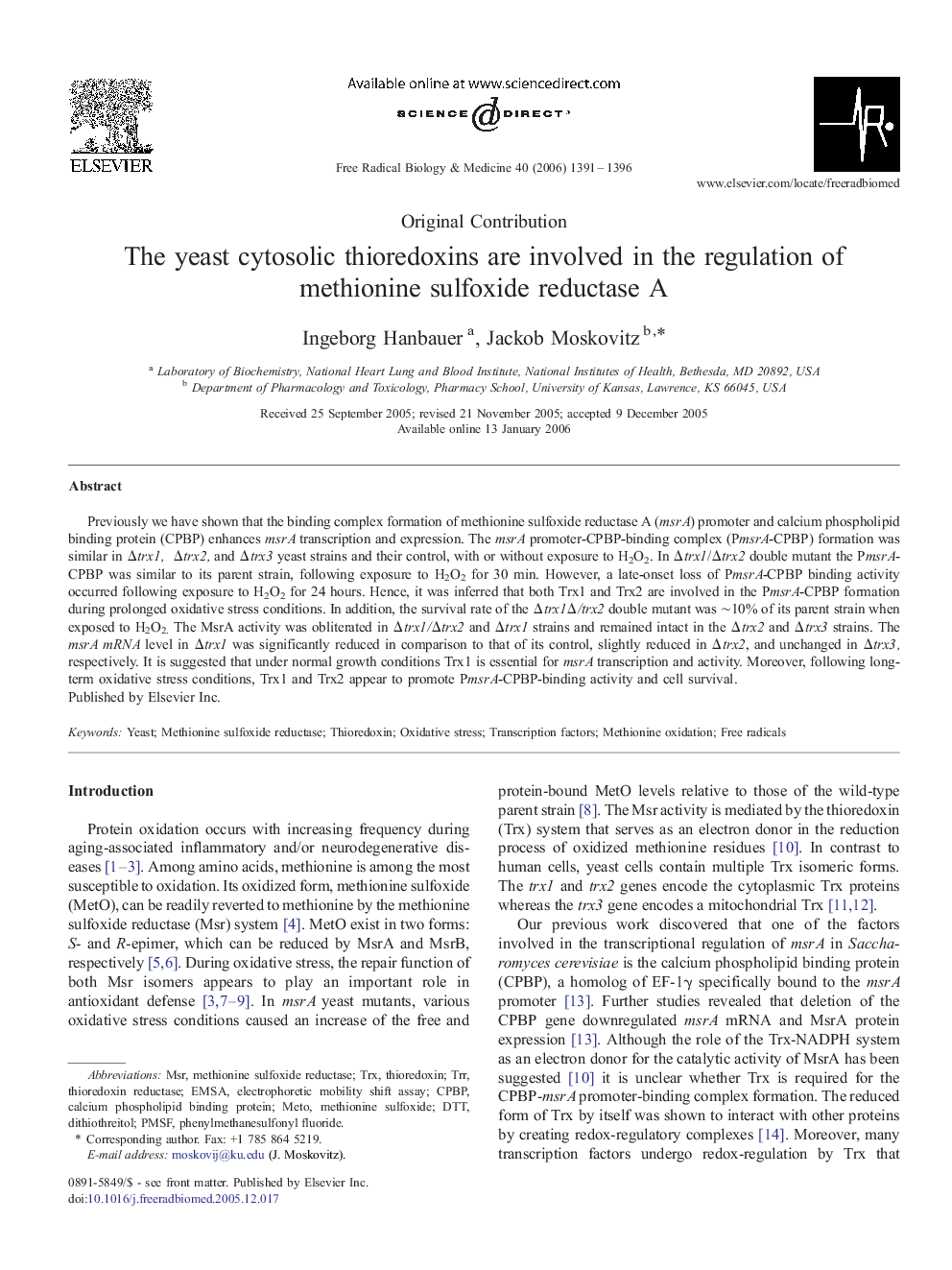| Article ID | Journal | Published Year | Pages | File Type |
|---|---|---|---|---|
| 1911586 | Free Radical Biology and Medicine | 2006 | 6 Pages |
Abstract
Previously we have shown that the binding complex formation of methionine sulfoxide reductase A (msrA) promoter and calcium phospholipid binding protein (CPBP) enhances msrA transcription and expression. The msrA promoter-CPBP-binding complex (PmsrA-CPBP) formation was similar in Îtrx1,  Îtrx2, and Îtrx3 yeast strains and their control, with or without exposure to H2O2. In Îtrx1/Îtrx2 double mutant the PmsrA-CPBP was similar to its parent strain, following exposure to H2O2 for 30 min. However, a late-onset loss of PmsrA-CPBP binding activity occurred following exposure to H2O2 for 24 hours. Hence, it was inferred that both Trx1 and Trx2 are involved in the PmsrA-CPBP formation during prolonged oxidative stress conditions. In addition, the survival rate of the Îtrx1Î/trx2 double mutant was â¼10% of its parent strain when exposed to H2O2. The MsrA activity was obliterated in Îtrx1/Îtrx2 and Îtrx1 strains and remained intact in the Îtrx2 and Îtrx3 strains. The msrA mRNA level in Îtrx1 was significantly reduced in comparison to that of its control, slightly reduced in Îtrx2, and unchanged in Îtrx3, respectively. It is suggested that under normal growth conditions Trx1 is essential for msrA transcription and activity. Moreover, following long-term oxidative stress conditions, Trx1 and Trx2 appear to promote PmsrA-CPBP-binding activity and cell survival.
Keywords
MSRTRRMetODTTTrxPMSFElectrophoretic mobility shift assayMethionine oxidationthioredoxin reductaseOxidative stressthioredoxindithiothreitolFree radicalsEMSA یا electrophoretic mobility shift assay Methionine sulfoxideTranscription factorsPhenylmethanesulfonyl fluoridemethionine sulfoxide reductaseYeast
Related Topics
Life Sciences
Biochemistry, Genetics and Molecular Biology
Ageing
Authors
Ingeborg Hanbauer, Jackob Moskovitz,
